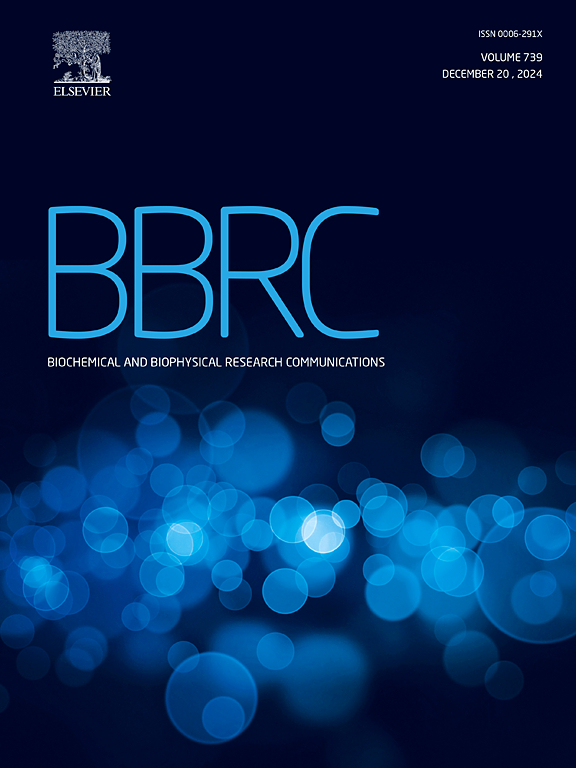Glycogen metabolism in methanogens: A key pathway for metabolic response to nutrient availability
IF 2.5
3区 生物学
Q3 BIOCHEMISTRY & MOLECULAR BIOLOGY
Biochemical and biophysical research communications
Pub Date : 2024-11-13
DOI:10.1016/j.bbrc.2024.150978
引用次数: 0
Abstract
Methanogens, which are found exclusively in the Archaea domain of life, have the potential to help solve future energy challenges by producing methane. As a result, their metabolism has attracted significant attention in recent years. Despite being unable to grow on sugars, they store glycogen, which raises intriguing questions about the role of this polymer in methanogen metabolism and the signals that trigger its degradation when methanogenic substrates are not available.
Here, we examined genomic databases to identify the enzymes responsible for glycogen synthesis and degradation in methanogens and explored the critical role of glycogen when nutrients and methanogenic substrates are scarce. Additionally, we analyzed the metabolic pathways involved in glycogen metabolism and their connection to the various types of methanogenesis exhibited by these organisms. Potential regulatory steps are proposed based on the reported effectors. Also, by employing the Alphafold3 server, the structural location of these sites in the enzyme structure was predicted, highlighting the advantages and limitations of this tool. Analysis of the allosteric effectors involved in this regulation suggests that energy charge may be the signal that triggers the metabolic switch from gluconeogenesis and glycogen storage to glycolysis and methanogenesis.
甲烷菌的糖原代谢:对养分供应做出代谢反应的关键途径
甲烷菌(Methanogens)只存在于古生菌(Archaea)中,有可能通过生产甲烷来帮助解决未来的能源挑战。因此,它们的新陈代谢近年来备受关注。尽管它们不能依靠糖类生长,但它们会储存糖原,这就提出了一些耐人寻味的问题:这种聚合物在甲烷发生器代谢中的作用,以及当甲烷底物不可用时触发其降解的信号。在这里,我们研究了基因组数据库,以确定甲烷菌中负责糖原合成和降解的酶,并探讨了糖原在营养物质和产甲烷底物缺乏时的关键作用。此外,我们还分析了糖原代谢所涉及的代谢途径及其与这些生物表现出的各种类型的甲烷生成之间的联系。根据报告的效应物,提出了潜在的调控步骤。此外,通过使用 Alphafold3 服务器,我们预测了这些位点在酶结构中的位置,突出了这一工具的优势和局限性。对参与这种调控的异生效应器的分析表明,能量电荷可能是触发代谢从糖元生成和糖原储存向糖酵解和甲烷生成转换的信号。
本文章由计算机程序翻译,如有差异,请以英文原文为准。
求助全文
约1分钟内获得全文
求助全文
来源期刊
CiteScore
6.10
自引率
0.00%
发文量
1400
审稿时长
14 days
期刊介绍:
Biochemical and Biophysical Research Communications is the premier international journal devoted to the very rapid dissemination of timely and significant experimental results in diverse fields of biological research. The development of the "Breakthroughs and Views" section brings the minireview format to the journal, and issues often contain collections of special interest manuscripts. BBRC is published weekly (52 issues/year).Research Areas now include: Biochemistry; biophysics; cell biology; developmental biology; immunology
; molecular biology; neurobiology; plant biology and proteomics

 求助内容:
求助内容: 应助结果提醒方式:
应助结果提醒方式:


